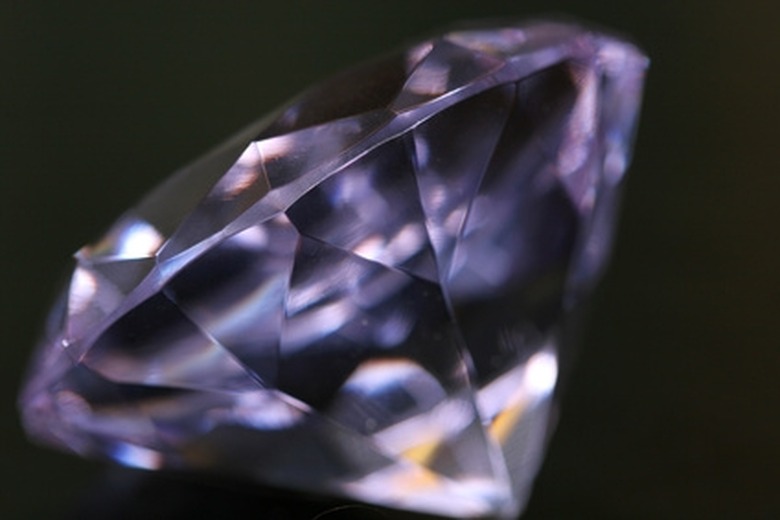What Is Specific Gravity?
Specific gravity can be used to determine if an object will sink or float on water. The specific gravity of water is equal to one. If an object or liquid has a specific gravity greater than one, it will sink. If the specific gravity of an object or a liquid is less than one, it will float.
Terminology
Terminology
As in all sciences, there is specialized terminology that it is helpful to know and have at least a basic understanding of when calculating specific gravity. Standard Temperature and Pressure (STP) is the temperature that specific gravity is usually calculated with. It is 39 degrees Fahrenheit, or 4 degrees Celsius. The pressure that specific gravity is usually calculated with is 760.00 mmHG (millimeters of Mercury). Density is signified by the Greek letter ?, known as \"rho.\"
Background
Background
To calculate specific gravity, you must know the density of the object or liquid and the density of water. It is necessary to have a basic concept of density to perform specific gravity calculations. The density of any object or liquid at STP can be found by dividing the mass by the volume.
At STP, one cubic centimeter of water will have a mass of one gram. The density of water is calculated as follows: Density of water = Mass of water / Volume of water Density of water = 1 / 1 Density of water = 1 gram/cm cubed
At STP, one cubic centimeter of lead will have a mass of 11.34 grams. The density of lead is calculated as follows: Density of lead = Mass of lead / Volume of water Density of lead = 11.34 / 1 Density of lead = 11.34 gram/cm cubed
Function
Function
The formula for calculating specific gravity can be written: SG = (?object or liquid)/ ?water.
To calculate the specific gravity of cork, divide the density of cork (220 kilograms/meter cubed) by the density of water (1000 kilograms/meter cubed). SG cork = ? cork / ? water SG cork = 220 / 1000 SG cork = .22 km/meter cubed .22 is less than 1; therefore cork will float on water.
To calculate the specific gravity of lead, divide the density of lead (11340 kilograms/meter cubed) by the density of water (1000 kilograms/meter cubed). SG lead = ? lead / ? water SG lead = 11340 / 1000 SG lead = 11.34 km/meter cubed 11.34 is more than 1; therefore lead will not float on water.
If you are given the SG of an object or liquid and need to calculate the density of that object or liquid, the formula would be re-written as follows: SG x ?water = ?object or liquid.
There are no units involved with the labeling of specific gravity. However, the density of the object or liquid and the density of water must be in the same unit of measurement.
Effects
Effects
Specific gravity is the density of an object or liquid in comparison to the density of water at an exact temperature and an exact pressure. Changes in temperature and pressure effect the density of objects and liquids and therefore effect the specific gravity of objects and liquids.
The specific gravity of a substance or liquid, including water, the reference liquid, is going to change depending on temperature and pressure. That is why a standard temperature and pressure are used in the calculation of specific gravity. If those outside influences are not regulated, specific gravity will change.
Water is a great illustration for this point. When water is frozen, it is less dense than when it is at 39 degrees Fahrenheit. When water is heated, it is less dense than when it is at 39 degrees Fahrenheit.
At 32 degrees Fahrenheit, the density of water is 915 kg/m cubed.
At 39 degrees Fahrenheit, the density of water is 1000 kg/m cubed.
At 176 degrees Fahrenheit, the density of water is 971.8 kg/m cubed.
Considerations
Considerations
In many scientific calculations, relative density is preferred to specific gravity. Relative density compares the density of two substances. Relative density is calculated by dividing the density of substance one by density of substance two. Substance two is generally a reference substance. If the result of dividing the density of substance one by the density of substance two is one, the substances have equal densities, meaning that equal volumes of the substances will have the same mass.
Cite This Article
MLA
Flora, Christy. "What Is Specific Gravity?" sciencing.com, https://www.sciencing.com/what-specific-gravity-4708148/. 24 April 2017.
APA
Flora, Christy. (2017, April 24). What Is Specific Gravity?. sciencing.com. Retrieved from https://www.sciencing.com/what-specific-gravity-4708148/
Chicago
Flora, Christy. What Is Specific Gravity? last modified March 24, 2022. https://www.sciencing.com/what-specific-gravity-4708148/
